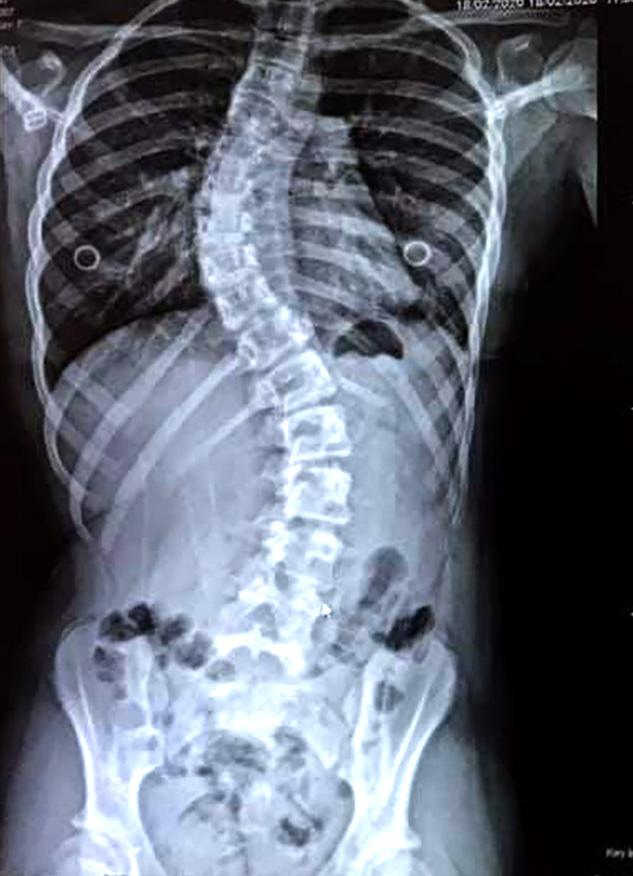
4 minute read
Set straight
A new surgery helps a local teen dancer with an ancient problem: spinal scoliosis
By Panagiota Rounis
Advertisement
I used to think that I was just a normal kid and never thought about why some activities were harder for me. I really like dance and I found some of the movements hard. My teacher would always make sure we had perfect posture. That was certainly hard for me although I didn’t really know why, until one day my ballet teacher tried to correct my stance.
This was the first sign of scoliosis. My ballet teacher, Miss Chantelle, noticed my back and shoulders were off as I seemed to lean to one side. She reached out to my parents and suggested that I go see my doctor to make sure it wasn’t anything serious. That was in September of 2019.
By October, I had an appointment with a specialist in Victoria and had x- rays on my spine. The doctor then told us that I had scoliosis.
It was something I'd never heard of before. He explained it was when a curve is formed in your spine. So instead of being straight, I had a spine that looked like a backwards S. The degrees were 47° on the top curve and 45° on the bottom curve.
I had many questions such as why was my spine curved? Would I have to undergo surgery? Is there a brace or can I do some exercises to straighten my spine? Will I grow out of it?
I didn’t get all the answers I was looking for but I was told that I would be seeing someone at BC Children's Hospital and talk with the scoliosis specialist doctor there and he would explain what the treatment would be although he did say that there was a 90 percent chance I'd need surgery.

Recovering at BC Children's Hospital after two 8-hour days of surgery
Around the middle of February, I had my first appointment. We did more X- rays and some other tests like an Xray of my hand to determine if my growth plates had closed. Since my original X- rays in October my curvatures had increased to 51° each with a rotation.
Dr. Firoz Miyanji informed me that I would definitely need surgery. I learned that there was an option to have my spine fused, which didn’t sound like a great option to me based on what I knew, but I was a really good candidate for a new type of surgery. It's called a VBT (Vertebral Body Tethering).

Recovering at BC Children's Hospital after two 8-hour days of surgery.
We were a little unsure considering that the VBT had only been established in 2012 but Dr. Miyanji informed us that the VBT surgery was less invasive and only took three-month recovery before I could start dancing or showing dogs again. Fusion surgery is more invasive and has a nine-month recovery. We decided on the VBT.
March 3 we were back Vancouver for surgery. I’d never had surgery so it was all a bit overwhelming. The day before I had tons of pre-op tests and the next morning we were getting ready to go for surgery. I remember waking up very early and then waiting in a room with my dad I definitely wasn’t as confident as I should have been but I knew it would help me.
The first surgery was on my lower back coming from the left side and attaching tethers to pull my spine straight. The next day was the same thing but on my right upper back with the addition of deflating my lung.
Each surgery was eight hours long.
The first few days after surgery are a little blurry and I was in a lot of pain and couldn’t move. But by day three we started working on my mobility. By the end of that day I was able to sit up and walk to the bathroom with help. The next day I stood up on my own and walked down the hallway.

Dancing three weeks later
We worked on walking for a little bit, and then the last test came it was to walk up and down a flight of stairs, if I could do that I could go home.
Recovery after that has been going well. It’s been around six months since my surgery and I'm able to do everything except use a trampoline.
I am part of a long term study on the recovery of patients that have had this surgery and I am happy my experience will help someone else. I will continue to have check ups with Dr. Miyanji and his team until I am 18.
I’m really grateful to my amazing team of Doctors at Children’s who found out why things were harder for me and have come up with a solution that has helped so many kids like me.


